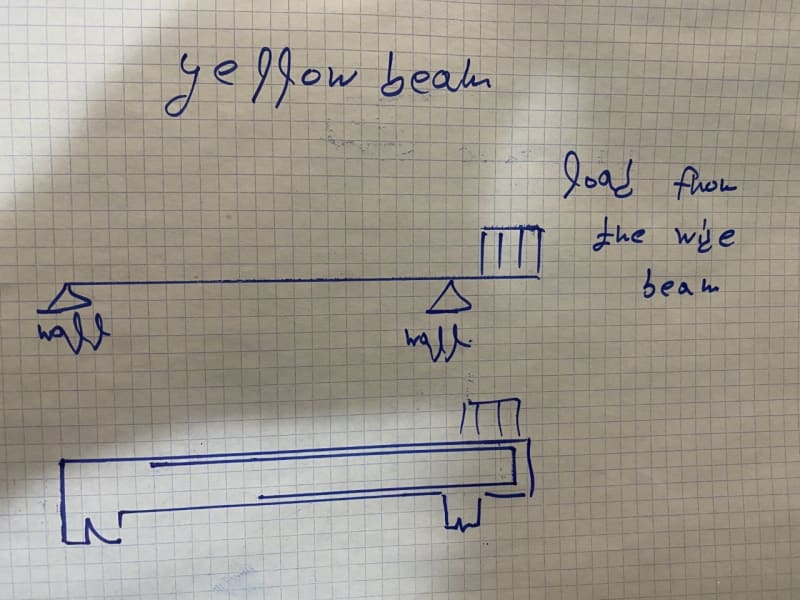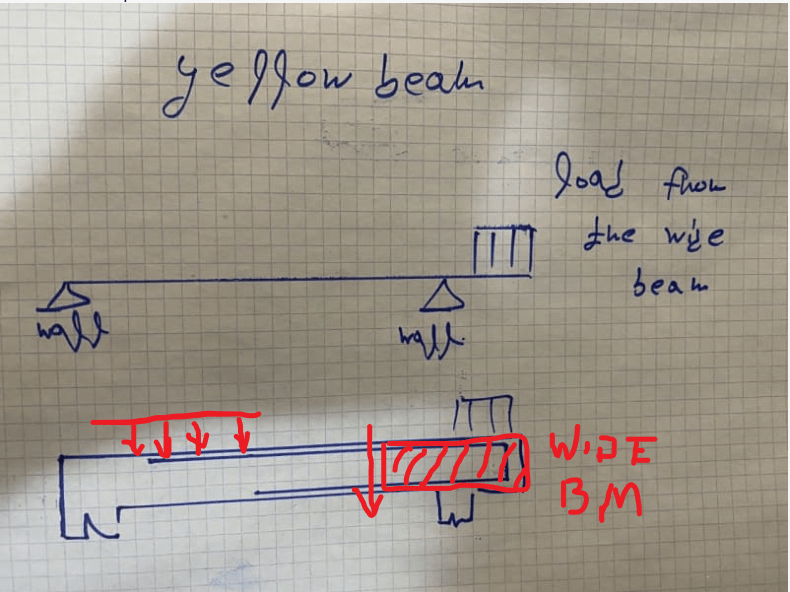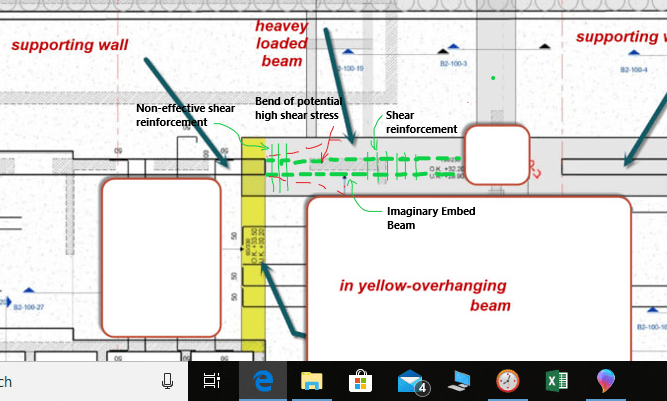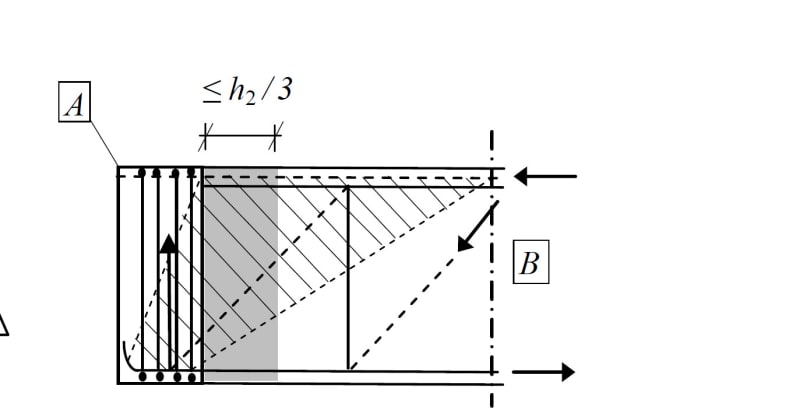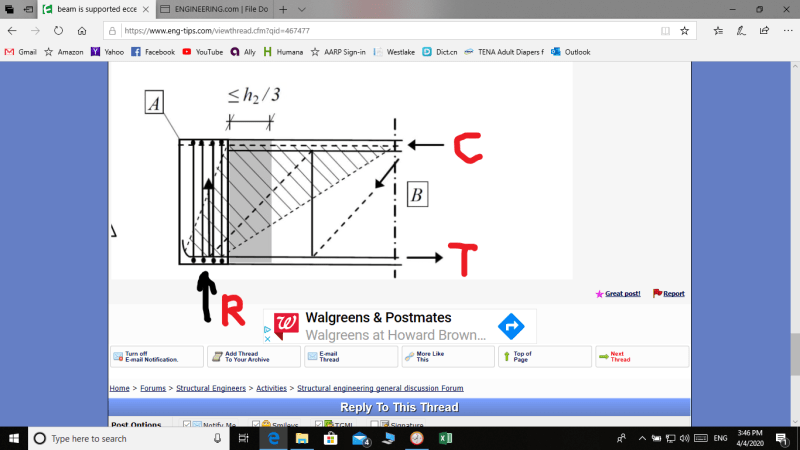TRPAM
Civil/Environmental
- Apr 4, 2020
- 13
Hey everyone
I have this case where the beam is wider then the support.
Normally due to heavy concentrated load on the beam ( transformation beam) there is the potential of shear compression failure.
In order to prevent this type of failure- increasing in the width of the beam will increase its capacity.
The question is: how wide can I make the beam if the beam is not fully connected to the support ?
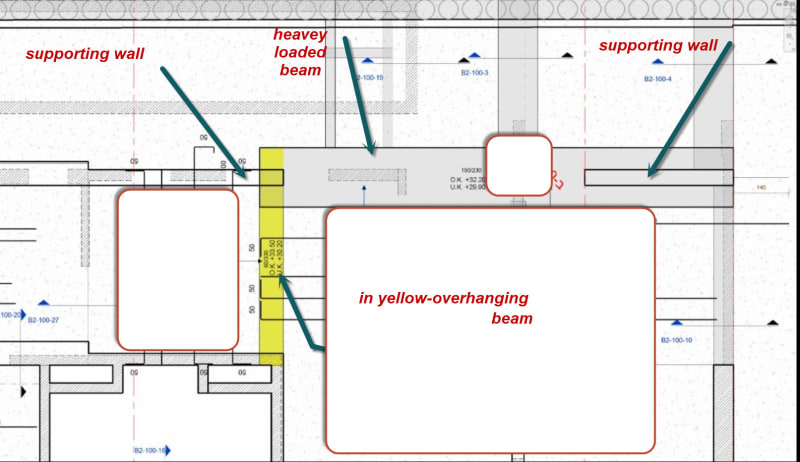
plus- Can I treat the yellow beam as a cantilever that will support the part that “hangs”?
And do I need to hang the load to the cantilever part ?
If there is any articles regarding this subject I will be glad to read
thank you very much.
I have this case where the beam is wider then the support.
Normally due to heavy concentrated load on the beam ( transformation beam) there is the potential of shear compression failure.
In order to prevent this type of failure- increasing in the width of the beam will increase its capacity.
The question is: how wide can I make the beam if the beam is not fully connected to the support ?

plus- Can I treat the yellow beam as a cantilever that will support the part that “hangs”?
And do I need to hang the load to the cantilever part ?
If there is any articles regarding this subject I will be glad to read
thank you very much.

